How Often to Sterilize Pump Parts by Age of Baby

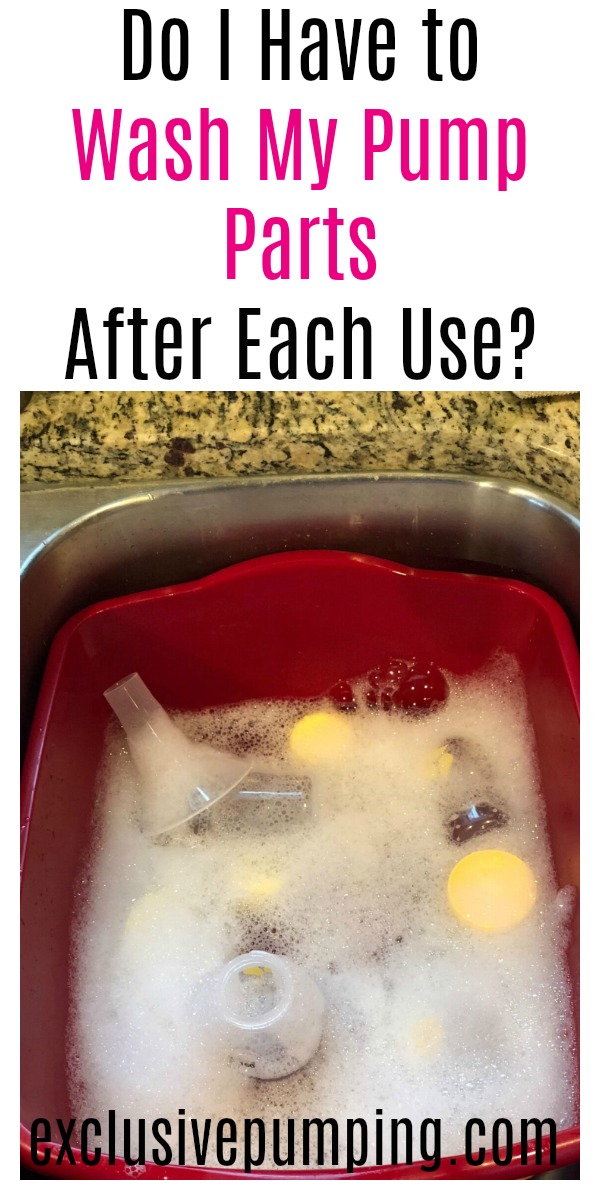
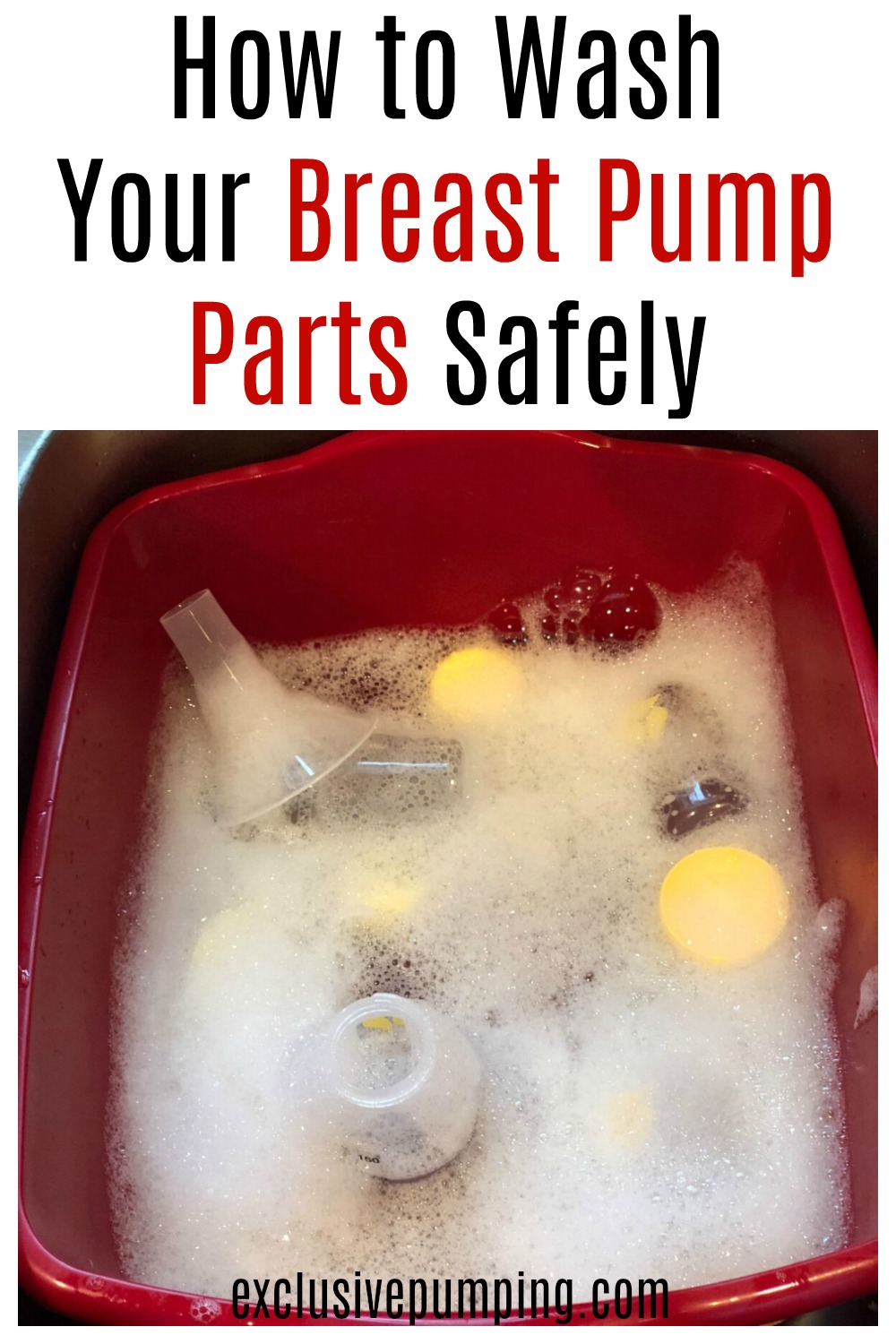
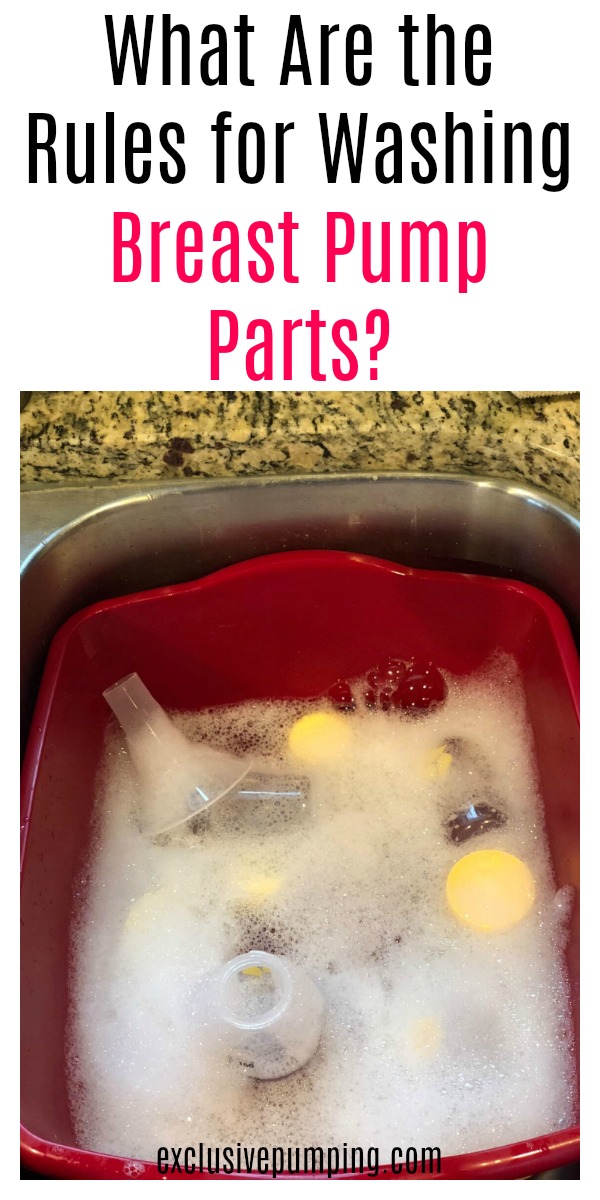
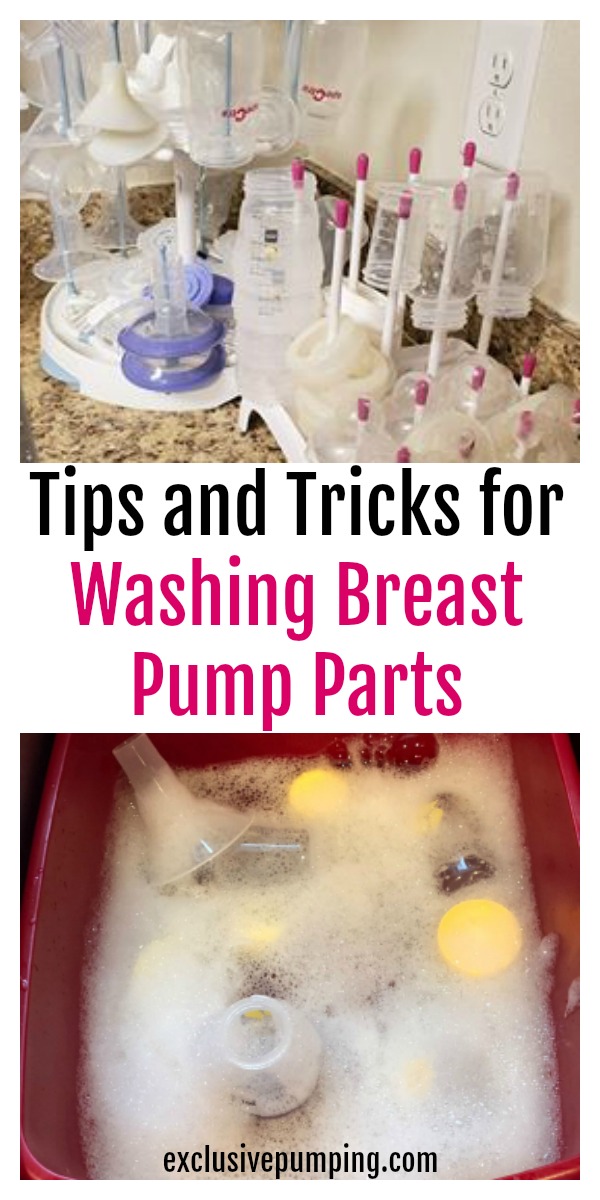
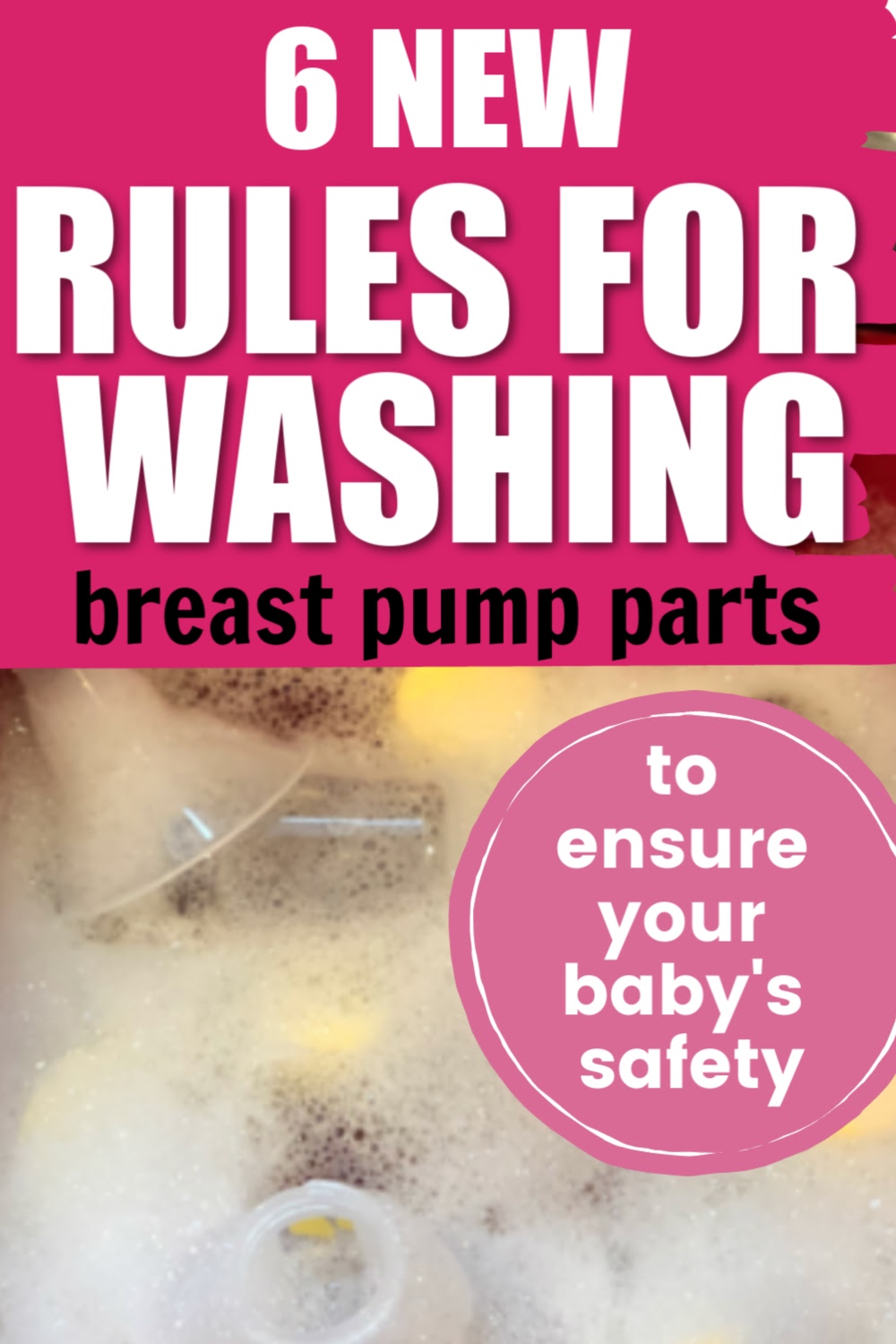
The CDC has recently issued guidelines for cleaning breast pump parts. Here is how the CDC recommends washing breast pump parts, and how to make post-obit these recommendations equally easy as possible.
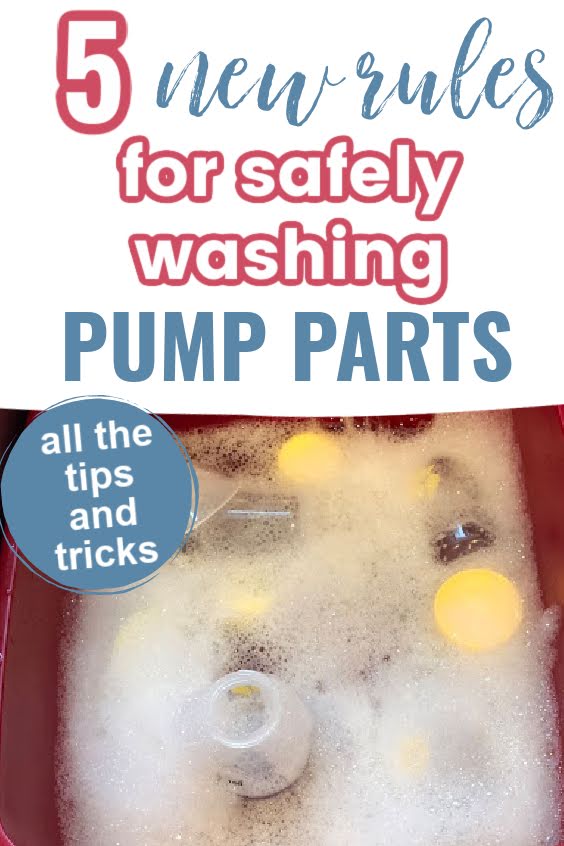
This mail may contain affiliate links, which means that if yous click through and brand a purchase, I'll be compensated at no additional cost to you lot. I only recommend products I love! More than info here.
Background on the CDC'southward Guidelines
Previously, there was no official protocol for how breast pump parts should be cleaned, merely the CDC decided to publish these after the expiry of preterm babe was linked to contaminated pump parts.
More data on the very sad case of the preterm baby is bachelor here; the short version for anyone not wanting to read the story is that the baby became very ill afterward being exposed to a pathogen chosen Cronobacter sakazakii.
During the investigation, the aforementioned bacteria was establish in the family'southward habitation sink. The investigation concluded that the baby was exposed to it later on the pump parts came into contact with the bacteria when they were being cleaned in that sink.
In this particular instance, the female parent soaked the pump parts in hot soapy water for several hours before rinsing them off and air-drying them.
What Are The New Guidelines For Cleaning Breast Pump Parts?
The new recommendations are written to avoid cases similar this.
I recommend reading and printing out the CDC's handout, but here are a few highlights that may be different from what you are already doing:
1. Launder pump parts and bottles in a wash bowl
Instead of washing your pump parts in the sink, employ a wash bowl that is only used for washing pump parts.

This will reduce the chances that bacteria from nutrient makes its way onto your pump parts.
2. Take breast pump parts apart earlier washing
Every piece that can be taken apart should be.
(Fifty-fifty the ones that easily become stuck, similar the yellow valve membrane on the Medela Pump in Style.)
iii. Use a bottle brush just for babe cleaning items
Don't use your bottle brush to clean your food dishes or anything else.

(If yous like using a bottle brush to wash your dishes, that'southward fine, only get a split one for that.)
If you have a dishwasher, run your wash basin and bottle brush through it one time a day.
4. Scrub in hot soapy water, then rinse
Wash your bottles and pump parts with the bottle brush in hot soapy water, then rinse in make clean running water.
5. Air dry pump parts
Allow your pump parts to completely air dry after washing. Do non dry them with a rag.
One time they've dried, you can store them in a clean covered container, like a food storage container or a plastic naught-top bag.
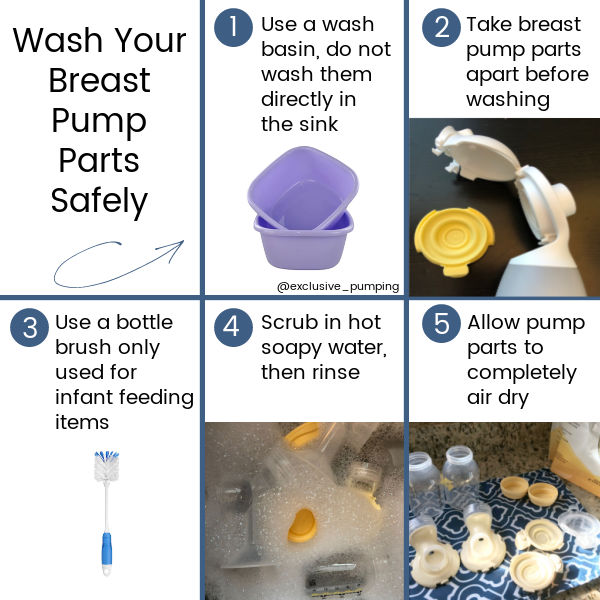
(Not sure what to practise with your tubing? More on cleaning breast pump tubing here.)
Can You Launder Pump Parts in the Dishwasher?
Yep. If your bottles and pump parts are dishwasher safe, the CDC states that is also an acceptable way to wash them.
Put pump parts and nipples in a mesh bag or container, and use soap and a hot h2o and heated drying cycle.

If parts are still somewhat wet when the wheel is finished, allow them to cease air drying before storing them in a container.
More on washing pump parts in the dishwasher hither.
Practise You Accept to Sterilize Breast Pump Parts after Each Use?
No.
The CDC recommends sterilizing pump parts, bottles, your wash basin, and bottle brush at least once per day if your babe is less than three months, is currently sick, or was born prematurely.
In that location are a bunch of unlike ways you can sterilize pump parts. More on how to do this here.
What Nigh the Fridge Hack?
And so far, all of the guidelines that nosotros've talked about take been pretty manageable.
Now, here'due south the kicker. The CDC now says that you should wash your pump parts "every bit soon as possible later every utilize."
That … is a tough one to swallow. In the past, I have recommended keeping pump parts in the refrigerator in a zip-top plastic bag in betwixt uses, and washing them thoroughly every 12-24 hours. This is known every bit the "fridge hack."
I think washing after each utilize makes perfect sense for moms who pump once or twice at solar day in their ain homes.
But it'due south hard to know whether the writers considered the fact that some women pump 12 times a day, sometimes when they are non in their homes, sometimes in the middle of the night, and thought about possible alternatives and the merchandise-offs to recommending washing immediately after every utilize.
For example, is it improve for a mother to put her pump parts in the fridge between uses, or to wash her pump parts every time as described – and so give upwards and stop exclusively pumping altogether because she can't stand over a sink and spend fifteen minutes washing pump parts in the middle of the night when she is exhausted and has already been up for an hour pumping and feeding the baby?
Information technology depends on whether the risks justify the recommendation to wash afterward every use. Maybe they do – I'm not a scientist or medical professional. And the health of your infant is of course the nearly of import thing.
How Can Y'all Brand Following CDC Guidelines for Washing Pump Parts Easier?
What I'm going to draw here is what I would do in terms of cleaning breast pump parts if I was still exclusively pumping. You should read it with the understanding that I'1000 a mom who has pumped a lot, merely besides is non a dr. or a scientist.
In order to follow the recommendation to launder pump parts after each use, I would buy enough sets of pump parts to become me through a full day.
At the end of the day, I would launder them all together in a batch as described in the CDC handout, and so sterilize them.
Alternatively, I might run the dishwasher every nighttime. Some parents in the Facebook group empty their dishwasher every forenoon, and so put their pump parts in it (along with dishes) throughout the day as they pump. Then they turn it on before going to bed.
The obvious downfall of this strategy – buying a lot of pump parts – is that information technology can become expensive. At that place are a few ways that yous may be able to mitigate this price:
- You may be able to find replacement parts at a better cost on amazon, as Nenesupply and Maymom may make more affordable sets that are uniform with your pump.
- Y'all may be able to get replacement breast pump parts for gratis through your insurance visitor.
What exercise you call up about this guidance for cleaning chest pump parts, and what is your programme? Tell united states in the comments!
More on washing bottles and pump parts here.
References
- Bowen, Anna, et al. "Notes from the Field: Cronobacter sakazakii Infection Associated with Feeding Extrinsically Contaminated Expressed Homo Milk to a Premature Infant â€" Pennsylvania, 2016." https://www.cdc.gov/mmwr/volumes/66/wr/mm6628a5.htm
- Centers for Disease Command. "How to Keep Your Chest Pump Kit Clean." https://www.cdc.gov/healthywater/pdf/hygiene/breast-pump-fact-sheet.pdf
Source: https://exclusivepumping.com/new-cdc-guidelines-cleaning-pump-parts/
0 Response to "How Often to Sterilize Pump Parts by Age of Baby"
Enviar um comentário